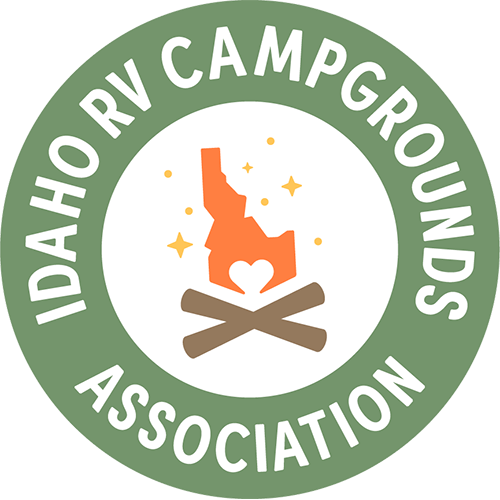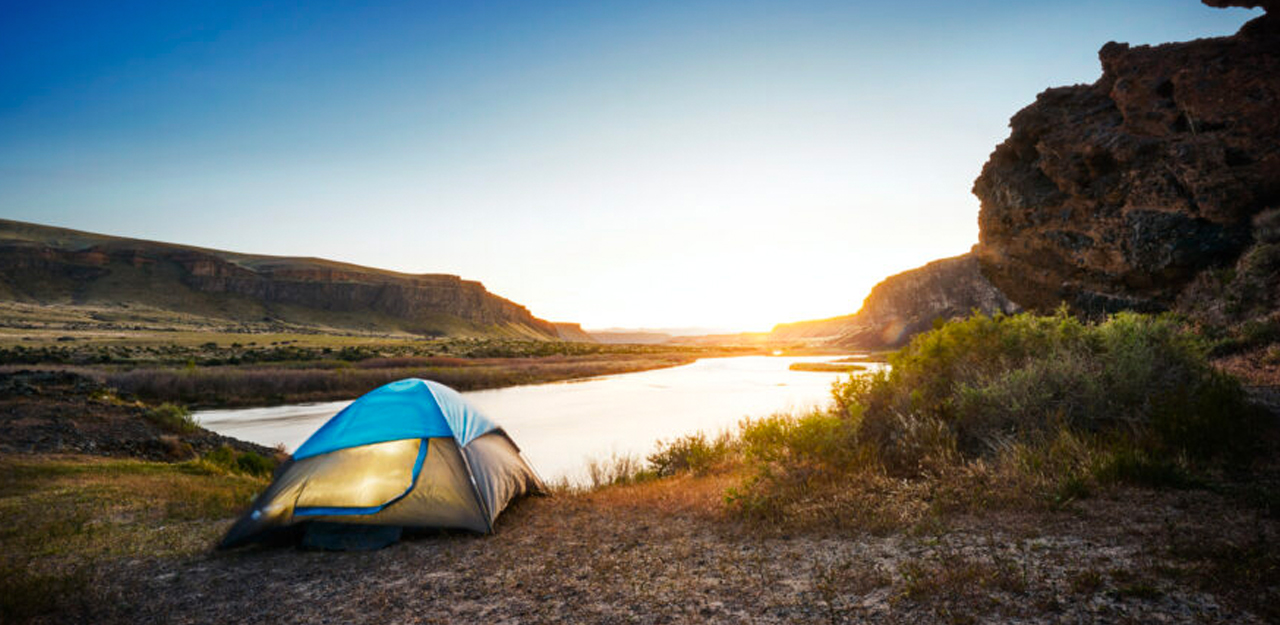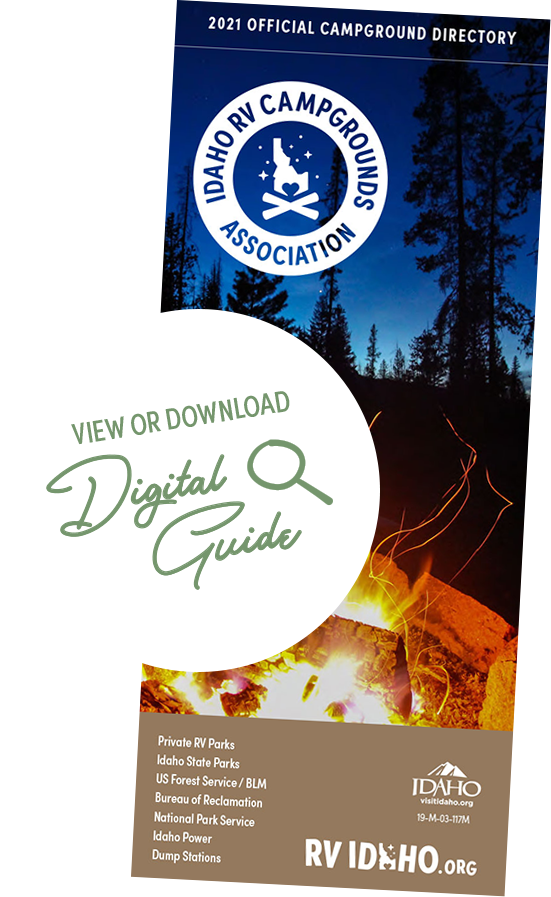Sometimes, the old tried-and-true camping spots just won’t do. When you feel like you need a true adventure — one that will wow your senses, provide a challenge, or give you total peace and quiet — try these off-the-radar Idaho gems. From eerie moonscapes to a campsite accessible only by water, these spots upend the traditional forest-and-fire pit model.
Bruneau Dunes State Park
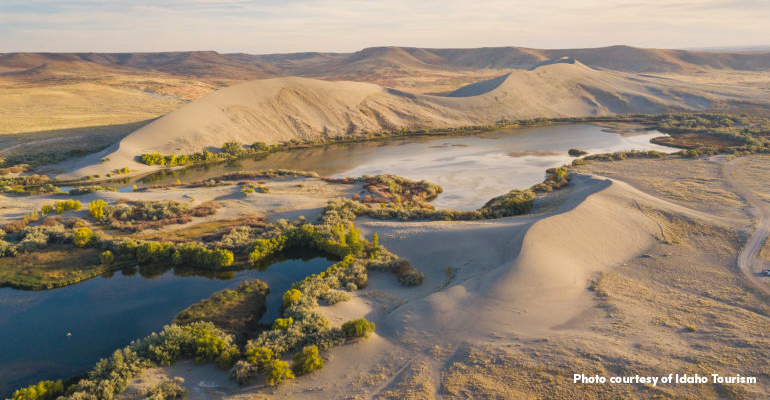
Some of the strangest geology in the state is just an hour away from the capital city of Boise. Bruneau Dunes State Park is home to the tallest single-structure sand dune in North America, a behemoth that towers 470 feet in the air.
So where did all of that sand come from? Most likely, the ancient Bonneville Flood deposited sand in the area that couldn’t escape because of the surrounding basin. Over thousands of years, winds from the southeast and the northwest have crisscrossed the sand, piling it up and keeping it stable — so stable that you can climb to the top! If you’re feeling adventurous, rent a sandboard from the nearby Visitors Center and whiz down the dunes in seconds.
Bruneau Dunes State Park has two campgrounds that are great for desert lovers who prize clear skies (there’s even an observatory that is open seasonally so you can see the stars and planets up close). Cast a line in the park’s lakes, bring your horse and hiking shoes, and check out one of the locations that makes Idaho’s geology so iconic.
Craters of the Moon National Monument and Preserve
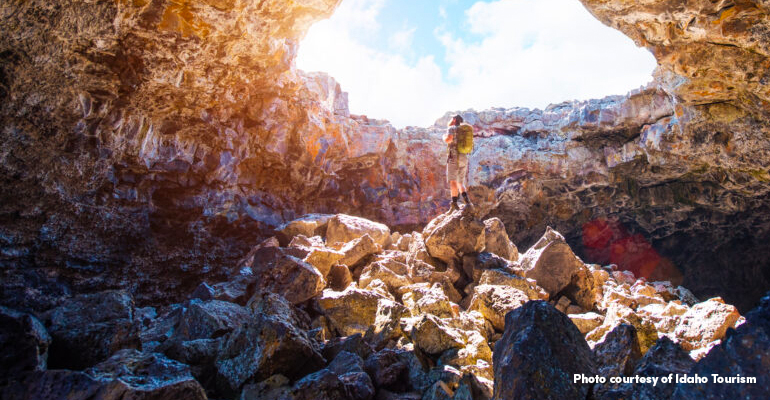
Back in the early 1920s, legendary Idaho enthusiast Robert “Two Gun” Limbert made it his personal mission to promote a vast, intimidating landscape of ancient lava flows in Southern Idaho. His campaign included a 1924 National Geographic article that gained even President Calvin Coolidge’s attention — by June of that year, Limbert’s dream of federal protection for the area now known as Craters of the Moon had become reality.
The otherworldly landscape of Craters of the Moon is massive — about the size of Rhode Island — and its earliest flows date back to eruptions that occurred 15,000 years ago. (The “new” flows are roughly 2,000 years old.) Hike through the monument and you’ll see cinder cones, giant craters, lava fields, and underground lava tubes you can explore with sturdy shoes and a headlamp. Craters also has unexpected treasures, such as blooms of tenacious wildflowers in the spring and an astounding assortment of animals.
Craters may contain some of the most fascinating geology on Earth, but it has many links to the heavens, too. In 1969, four astronauts who had been selected for the Apollo 14 mission traveled to Craters to study the lunar-like geology of the monument. And in 2017, the monument was designated an International Dark Sky Park in 2017 and has some of the darkest skies in the national park system.
The monument has designated campsites and backcountry camping. Campsites here are accessible starting in May and close between late September and November, so be sure to plan accordingly.
Magee Ranger Station
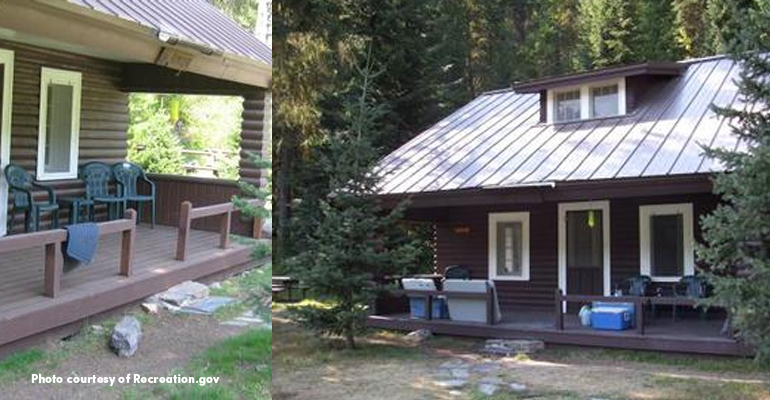
We’re bending the rules a bit here — the Magee Ranger Station isn’t actually a campsite, but a fully-furnished cabin tucked near the tiny community of Prichard in the Idaho Panhandle. But it’s worth a mention for its gorgeous location and its history.
The station takes its name from Charles Magee, who built a homestead on the site in 1905. The current cabin was built in 1922 and is listed on the National Register of Historic Places, and it still retains its rustic roots. There is no electricity at the cabin, so you’ll need to bring along your own propane and lamps, and you’ll have to leave the building to use the shower and toilet. But the scenery is worth the effort: Teepee Creek, an offshoot of the Salmon River, flows near the property. You’ll also have access to more than 30 miles of nearby trails, which makes the Magee Ranger Station an ideal hub for an adventurous family or group of friends.
The Forest Service still uses the Magee cabin, so be sure to book a reservation in advance.
City of Rocks National Reserve
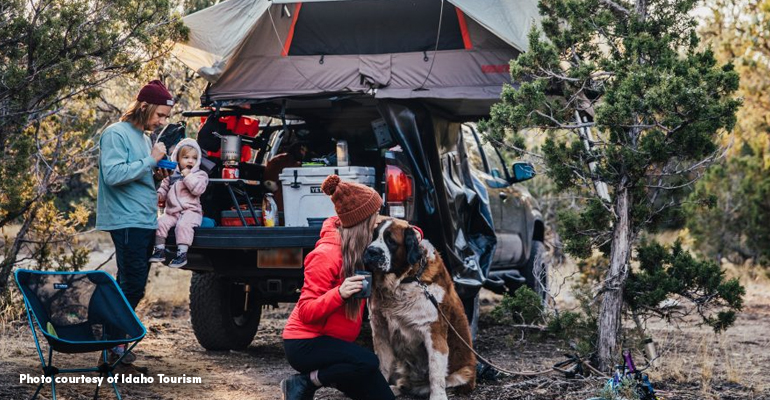
A city made out of rocks? That’s what the emigrants on the California Trail thought of as they passed through this staggering landscape of tall hoodoos, domes, and pyramids formed out of granite. You won’t find an actual city here, but unlike a real city, you can scale the “buildings.” Climbers from around the world flock to the City of Rocks to test themselves, but those who prefer to remain closer to the earth will love the hiking, biking, wildlife photography, and hunting in the area.
The area is rich in history, too. People have been making their mark in the silent city for hundreds of years, and if you look closely you can find pictographs and carvings made by 19th century emigrants. (Graffiti and carving are banned now, though, so keep that pen knife tucked firmly away.)
The camping in this Southern Idaho spot is spectacular, with options ranging from primitive sites to the Willow Glamping Yurt. There are even equestrian camping sites and amenities like firewood for sale.
Maiden Rock Campground
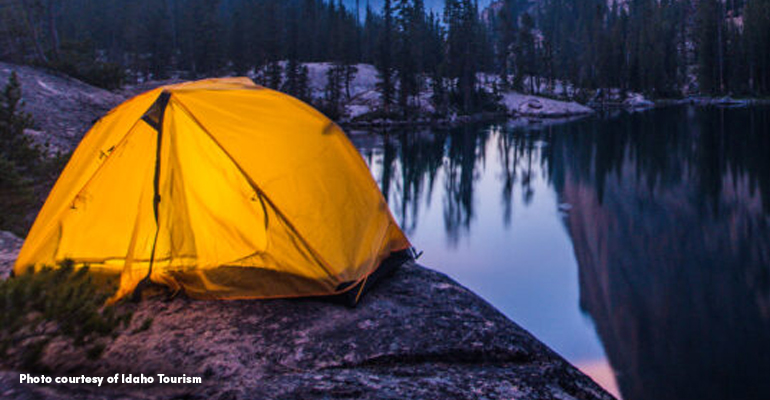
If you’re up for a true adventure, put Maiden Rock on your list of must-see camping spots. This small, summer-only site is located on the western shore of Lake Pend Oreille, a 43-mile-long landmark that plunges to a depth of over 1,000 feet.
Here’s the catch: Maiden Rock is accessible only by boat.
The campground offers dispersed campsites, a vault toilet, and a picnic area, but you’ll have to pack in all of your supplies. Once you arrive, though, there will be nothing blocking you from nature. Hike among berries and wild ginger, go fishing, or use the beach to set off on an afternoon swim. For more information, check out the U.S. Forest Service site.
Need even more camping ideas? We can help! Download your free camping guide here and discover the best the state has to offer.
